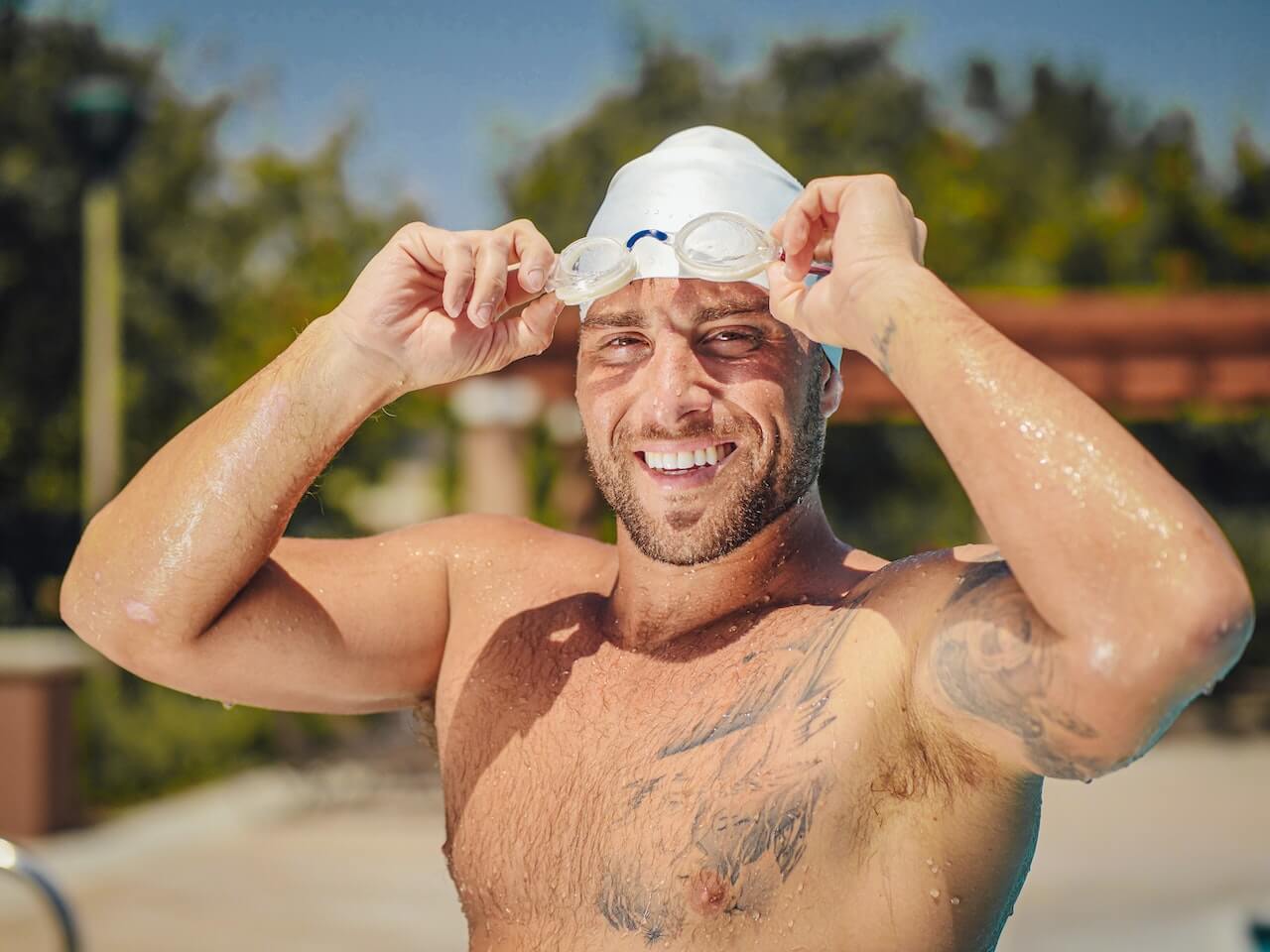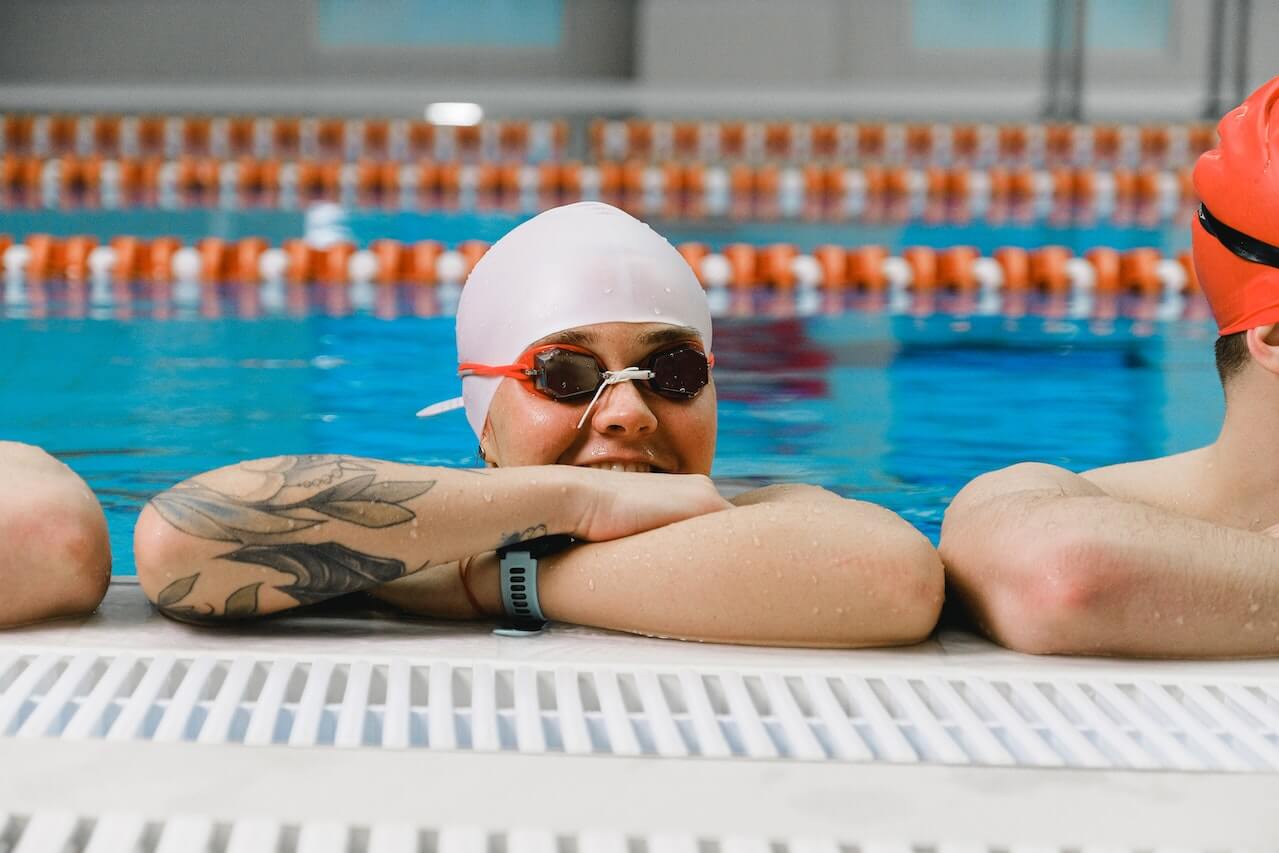Many people are eager to show off their brand new tattoos. However, there’s one common question among new tattoo owners: Can you waterproof a tattoo for swimming?

While you may come across various methods to keep your tattoo protected while swimming, you need to understand that no method is 100% foolproof. Swimming with a fresh tattoo can expose it to water, chlorine, and other potential irritants, which can be detrimental to the healing process.
In this article, we’ll explore why you can’t completely waterproof a tattoo for swimming and the risks associated with attempting to do so.
Why You Can’t Waterproof a Tattoo for Swimming
Why Waterproof Bandages or Film Dressings Are Not Enough
A fresh tattoo is essentially an open wound, so you must let it heal properly. If you’re considering swimming with your fresh ink, you might be tempted to use waterproof bandages or film dressings as a protective barrier. However, these options aren’t enough to keep your tattoo safe.
Waterproof bandages or films do not provide a perfect seal against water. They could shift or peel off during swimming, leaving your tattoo exposed to bacteria-filled water. Additionally, these coverings can trap moisture, dirt, or bacteria underneath, increasing the risk of infection.
Even if the barrier stays in place, water may still seep in. Prolonged exposure to water, especially chlorinated or saltwater, can delay the healing process and potentially harm your tattoo.
The False Security of Waterproof Tattoo Covers
Another potential issue is the false sense of security provided by waterproof tattoo covers. Although these products claim to keep your tattoo dry, they do not offer complete protection.
With a “waterproof” bandage on, you may be emboldened to enter the pool or ocean before your tattoo has had the time to fully heal and that can put you at risk of many nasty things, which we discuss in the next section.
Risks of Swimming with a New Tattoo

Open Wound and Risk of Infection
Getting a new tattoo involves puncturing your skin with tiny needles, which leaves an open wound.
During the healing process, you must avoid exposing your fresh tattoo to any potential source of infection, like swimming in a pool, ocean, hot tub, lake, or any other unclean water source.
If bacteria enters the wound, it could lead to a painful and dangerous infection, delaying the healing process and potentially damaging your tattoo permanently.
Chlorinated Water and Bacteria in Swimming Pools
Even though chlorinated water in swimming pools is meant to kill bacteria, it doesn’t always eliminate all harmful microorganisms.
Additionally, chlorine and other pool chemicals can weaken your skin’s natural barrier and directly affect the inks of your fresh tattoo, causing discoloration and fading.
It would be best to wait at least two to four weeks before swimming with a new tattoo to minimize these risks.
Hot Tubs and Saunas
While it may be tempting to take a dip in hot tubs or saunas during the healing process, doing so can put your tattoo at risk.
Both hot water and steam can cause your skin to become more porous, allowing bacteria to enter and potentially lead to infection. Additionally, the heat and humidity can also cause excessive sweating, which may negatively affect your healing tattoo.
As a general rule, you should avoid swimming in bodies of water (including pools, oceans, and hot tubs) for 2-4 weeks after getting your tattoo, or until it’s fully healed.
When to Use Waterproof Bandages
Considering that your new ink is essentially an open wound, keeping it clean and dry is crucial. Using a waterproof bandage like Saniderm, Tegaderm or SecondSkin can help protect your tattoo from water and bacteria, especially during the first few days.
However, don’t use plastic wrap or petroleum jelly, as they can trap bacteria and hinder the healing process.
Before applying a waterproof bandage, gently clean your tattoo with a mild, fragrance-free soap and pat it dry.
Apply a thin layer of aftercare cream, then cover it with a waterproof bandage. Make sure to change the bandage regularly, but don’t keep it on for too long, as constant coverage could cause irritation.
A waterproof bandage can keep your tattoo dry from rain or the occasional splash, but it is not effective if it is completely submerged underwater.
How to Determine if Your Tattoo is Fully Healed
Determining if your tattoo is fully healed can be a bit confusing, especially since it might look and feel healed on the surface within just a few days.
Most tattoo artists estimate a small tattoo to be fully healed within 2 to 4 weeks, and larger ones may take 6 weeks or more. Here are a few simple steps to help you figure out if your tattoo is ready for swimming or other water-based activities.
Step 1: Assess the way your tattoo feels.
The first and most obvious step is to simply judge how the tattoo feels on your skin. Does it feel tender or sensitive to the touch? If so, your tattoo probably still needs more time to heal. When it no longer feels sensitive, you can move on to the next step.
Step 2: Check for scabs or peeling.
During the healing process, it’s normal for the top layer of your skin to peel, flake or even create scabs. If you’re still experiencing any of these symptoms, your tattoo needs more time to heal. Avoid picking at scabs or peeling skin to prevent injury and potential infection.
Step 3: Pay attention to itchiness.
As your tattoo heals, it may become itchy, similarly to how your skin feels after getting sunburned. While some itchiness is normal, it could also be a sign that your tattoo isn’t fully healed yet. Refrain from scratching or rubbing the area, as this might cause more damage.
Step 4: Observe the color and texture.
Take a close look at your tattoo. Is the ink still raised, or does it appear flat and smooth? Fully healed tattoos typically have a smooth texture and the color should be consistent throughout. Any raised areas or inconsistencies in color could be a sign that your tattoo needs more time to heal.
Step 5: Consult your tattoo artist.
Finally, if you’re still uncertain whether your tattoo is fully healed, it’s always a good idea to consult with your tattoo artist. They have the expertise and knowledge to advise you on the healing process and can provide recommendations for safe swimming practices.
Warning Signs of Tattoo Infections
During the first few days after getting a tattoo, you might experience some mild redness, swelling, and tenderness. This is normal and should gradually subside. However, if these symptoms persist or worsen after a week, it’s time to pay close attention and take some action.
Keep an eye out for the following symptoms that could indicate a potential tattoo infection:
- Intense pain and tenderness in the area
- Increasing redness, sometimes spreading out from the tattoo site
- Warmth or heat coming from the tattoo
- Swelling that doesn’t decrease over time
- Pus or discharge coming from the tattoo
In more severe cases, you might also experience:
- Fever
- Waves of heat and cold
- An overall sense of illness or malaise
If you notice any of these symptoms, contact your tattoo artist or a medical professional for guidance on how to proceed. Taking prompt action can help prevent the infection from worsening and protect the appearance of your tattoo.
Keeping Your Tattoo Clean
While you shouldn’t go swimming while your tattoo is healing, you can and should still shower. However, there are a few things you should change about how you shower.
This section is also useful if you’ve already gone swimming and are worried about the risk of infection.
When taking care of a new tattoo, switch to a fragrance-free soap to ensure a gentle cleansing process. Fragrance-free soaps are specially formulated without any added scents, making them less likely to irritate your skin and ultimately hinder the healing process of your tattoo.
When washing your tattoo, be mindful of the water temperature as well. Avoid using hot water, as it can remove your skin’s natural oils and potentially harm the tattoo. Instead, opt for cool or lukewarm water to protect your skin and the integrity of your tattoo.
In addition to using a fragrance-free soap, be cautious not to rub or scrub the area too aggressively. Gently pat your skin with a clean towel to dry it, being extra cautious around the tattooed area.
Remember, gentle care is crucial during the healing process to ensure the best results for your tattoo.
Frequently Asked Questions
How soon after a tattoo can you swim?
Generally, you should wait at least 2-4 weeks after getting a tattoo before swimming. This is because a new tattoo is essentially an open wound, and exposure to water can introduce bacteria and other contaminants which can lead to infection. The time frame can vary depending on your personal healing speed, the size and location of the tattoo, and the type of water you plan to swim in (chlorinated pools, natural bodies of water, etc.).
Can you swim with a tattoo cover like SecondSkin, Tegaderm, or Saniderm?
While products like SecondSkin, Tegaderm, or Saniderm are designed to protect a new tattoo from external elements, they do not fully waterproof the tattoo against prolonged exposure to water. These products can provide some level of protection for a brief shower, but swimming can cause these films to loosen, allow water in, and create a moist environment which can promote bacterial growth and potentially lead to an infection. Therefore, it’s still recommended to wait until your tattoo has fully healed before swimming.
Can I put Vaseline on my tattoo for swimming?
Vaseline should not be used to protect your tattoo while swimming. While it does create a barrier, Vaseline is not waterproof and will not prevent water and potential contaminants from reaching your new tattoo during swimming. Moreover, its thick consistency can block the pores and affect the skin’s ability to breathe, which is crucial for the healing process. According to the American Academy of Dermatology, petroleum-based products may also cause ink to fade.
Sources:
- https://www.usms.org/fitness-and-training/articles-and-videos/articles/how-long-should-i-wait-to-swim-after-getting-a-tattoo
- https://www.healthline.com/health/body-modification/how-long-after-a-tattoo-can-you-swim
- https://www.healthline.com/health/tattoo-aftercare
- https://www.aad.org/public/everyday-care/skin-care-basics/tattoos/caring-for-tattooed-skin
- https://www.self.com/story/tattoo-aftercare

